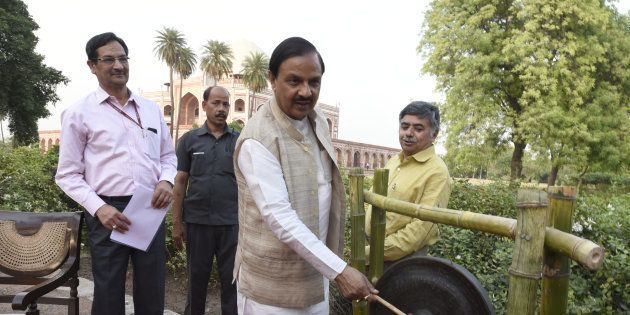
O for Outstanding, P for Promising, W for Waiting.
The Ministry of Culture has decided to divide all writers and artistes in the country under these three categories. Depending on where they are placed, each person will enjoy suitable bounties, such as the chance to travel and participate in various events representing India.
The principle behind this idea, the ministry says, is to minimise nepotism and the dominance of cliques on the cultural scene. In the interest of fairness, a pilot project has already examined 185 artists and assigned each of them to one of these three "grades". The ministry expects the number of applicants to have themselves evaluated will soon rise to a staggering one crore. Whether it has the means or the expertise to deliver fair reports on such a vast number of aspirants is another matter.
Officials say that the plan is to create a cultural map of India, to have a database of artistes eligible for performing at various levels, and to fix an honorarium for each category. A memorandum from the ministry also adds that an artiste can participate in an official event for the second time only after a "cooling period of two years" since their previous appearance. Presumably, this interval would ensure more number of people get a chance to be featured across a range of platforms.
The reactions to the initiative have been expectedly divided.
Some, especially those who have passed the test with flying colours, have approved of the system heartily. Bharatnatyam dancer Devayani Kumari, who was graded O, has lauded the idea, since a committee of bureaucrats, rather than one comprising experts and critics, would be less biased in its judgement, she felt. Given the rivalries in the world of arts and letters, her concern is not entirely unfounded.
Those awarded a W have been understandably upset and affronted. And then, there are the rest, who are simply mystified by the lack of transparency in the selection process.
The system of grading artistes is not uncommon in India. All India Radio (AIR) has used it to audition performers since decades, though under strict guidelines, supervised by committees that comprise Grade A artistes, scholars and veterans in the field. In contrast, the culture ministry seems to have left the complex task of arbitrating on the merit of artistes to a troop of bureaucrats, with a handful of "experts" thrown in, and little transparency on the specific criteria under which each candidate will be judged.
India, as a society, is deferential to its cultural icons, who can seldom stomach the most constructive critiques of their work, let alone criticism, with good grace. The ministry's intentions may signal a change of direction from this culture of paying homage to the high and mighty--though not really, it would seem, if you consider its emphasis on making sure that experienced, and not junior, artistes are prominently featured in its calendar of events. In any decision to celebrate art, only merit, and nothing other else, ought to weigh in. A child prodigy is as worthy of representing India as a Old Master in the same field.
More importantly, there would have been less reason to be suspicious of the ministry's intentions had it not been for its checkered trajectory under the leadership of Mahesh Sharma. Since his coming to power, there have been sea changes in the cultural scene of the country, especially in the national capital.
The heads of the National Museum and Lalit Kala Academy were moved swiftly, amidst accusations of "saffronisation" of the cultural sphere, after he took over the ministry. Sharma, of course, denied any such motive. He was also the man who showed little regard for the writers who were returning their national awards after the murder of Kannada writer M.M. Kalburgi. "If they say they are unable to write, let them first stop writing," he said at the time.
In the last two years, since the National Democratic Alliance (NDA) government came to power under Prime Minister Narendra Modi, there have been allegations of the influence of Rashtriya Swayamsevak Sangh (RSS) on several major cultural appointments.
A wave of protest followed after television actor Gajendra Chauhan was made the president of the Film and Television Institute of India (FTII). Five others, with RSS affiliations, were also employed at there. Former cricketer Chetan Chauhan, who has as much to do with fashion as Sabyasachi Mukherjee has to do with cricket, was made chairperson of the National Institute of Fashion Technology (NIFT).
In 2014, Yellapragada Sudershan Rao, a historian whose credentials were widely questioned, was given the chairmanship of Indian Council of Historical Research (ICHR). In the same year, the auditorium of the National Museum in Delhi was given out to an organisation called Akhil Bharatiya Itihaas Sankalan Yojana (ABISY) for a conference to celebrate the achievements of a so-called Hindu ruler "Hemu", who allegedly established a short-lived "Hindu raj" in North India before the second battle of Panipat. Speaking there, rightwing ideologue Subramanian Swamy called for the burning of books by "Nehruvian" historians such as Romila Thapar and Bipin Chandra.
With such controversies trailing it, the culture ministry's new move can at best be awarded a W, until it decides to make its workings a little less cryptic.
